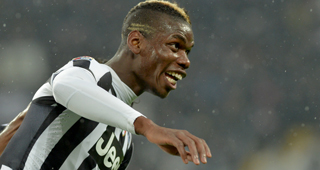No club lost more from their side this summer than Juventus. Carlos Tevez, Andrea Pirlo and Arturo Vidal represented the midfield engine that gave last year’s team their balanced identity of experience, playmaking and grit rolled in a powerful 3-5-2 formation that won its fourth straight Serie A title while knocking out Borussia Dortmund and Real Madrid in the Champions League. Pirlo provided the calm, Tevez the drive and determination, and Vidal did everything in between.
Then they all left - Pirlo to New York, Tevez back home to Argentina, and Vidal replicating the same role for a potential Champions League opponent in Bayern Munich.
Not that team president Andrea Agnelli, director of football Giuseppe Marotta, and sporting director Fabio Paratici haven’t faced worse. The trio took over the club in 2010, in which the team was coming off a seventh place finish in Serie A, and set to lose over $100 million the next season. That was the financial low point of Agnelli’s reign. Since then, the edict has been to succeed both on and off the field in the form of trophies (four straight Serie A titles) and financial stability (although the side are the most popular team in Italy, they had struggled with matchday attendance before opening their new stadium).
With finances in mind, Marotta built not just the best “bang for your buck” midfield in Europe, but perhaps its best midfield, on a combination of free transfers, savvy scouting, and the youth academy. The midfield four of Pirlo (free transfer), Paul Pogba (small fee), Claudio Marchisio (youth academy), and Arturo Vidal ($11.8 million fee from Leverkusen) that started the Champions League final against Barcelona was constructed for just under $12 million. The hashtag “#costmorethanjuvemidfield” was a bit unfair with a club as storied as Juventus, but it drove the point home of finding value and winning at the same time.
And this summer, the side underwent the biggest rebuild since the first season Agnelli took over the team.
-----
The tag of “the next great (insert great player here)” is a burden more than a complement, and even more so when the comparison is the impossible heights of Lionel Messi. That’s the expectations that Paulo Dybala, the $40 million playmaker, brings to Juventus. Dybala certainly has the ability, having been directly involved in 43 percent of Palermo’s goals last season with 13 goals and 10 assists. But on top of becoming “the next Messi”, Dybala has the more immediate responsibility of being “the next Tevez” in powering Juventus’ attack. This means not only replicating Tevez’s goals and assists - but Tevez’s intangibles, character, and ability to inspire the team in difficult matches.
Juventus have had a historically bad start to the season. The last time they lost their opening two matches was in 1912. Lacking creativity and ideas, they failed to break down Udinese at home in a 1-0 loss. They lost on Sunday to Roma 2-1. Dybala scored against Roma, but replacements for Pirlo and Vidal look far from filling the quality, personality and desire that defined the team last season (granted, Marchisio and Sami Khedira will change the side once they return from injury). Gigi Buffon pointed out after the Roma loss that Juventus were “too timid” and “became afraid after a few missed passes”. Last season’s side seemed to grow with each problem and challenge. The character and leadership of this new midfield will be molded by experience of winning, losing, and facing adversity in domestic and European matches - if it ever happens at all.
It’s not for a lack of trying. Besides signing midfield anchor Sami Khedira in early June, Juventus added Juan Cuadrado, Hernanes and Mario Lemina to shore up the side’s trademark five player midfield (and to keep the theme of financial balance, Khedira was on a free transfer, Cuadrado and Lemina are on season long loans and Hernanes cost only $12 million).
The adventure is needed. Cuadrado’s pace will be sorely needed to unlock opposition defenses, as well as providing Dybala with more room to operate in the middle. Hernanes himself was once dubbed “the next Kaka” while named “the most promising player in the world” in 2009 by The Times. While he’s not Kaka, he is vastly underrated. And at 30 years old, with years of Serie A experience under his belt, his dribbling, passing and maturity will be valued alongside Khedira and Marchisio (and his box to box creating style fits perfectly with the role of the three man midfield). Khedira, Cuadrado and Hernanes are exactly the type of low risk, high reward deals that Agnelli hit time and time again to rebuild Juventus the first time around.
Winning an unprecedented fifth straight Serie A title is one of many targets this season, a difficult start aside. But the real measure for success lies in Europe, against the likes of Manchester United, Barcelona and Real, with deep runs in the Champions League and profits that come with it. Pirlo, Vidal and Tevez led the first step of Juventus’ transformation in the form of domestic dominance. It’s up to this next generation to complete the transition back into European powers - for good, this time.



